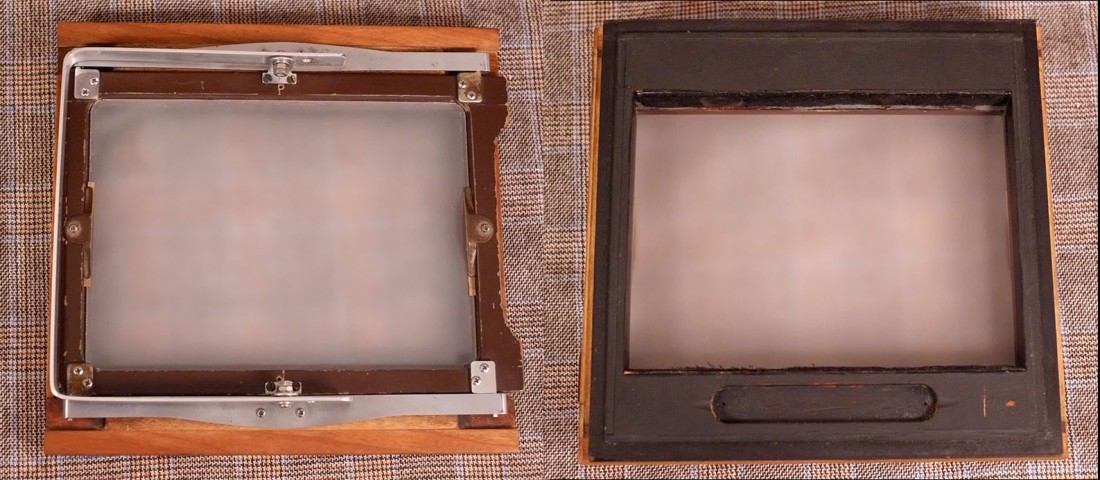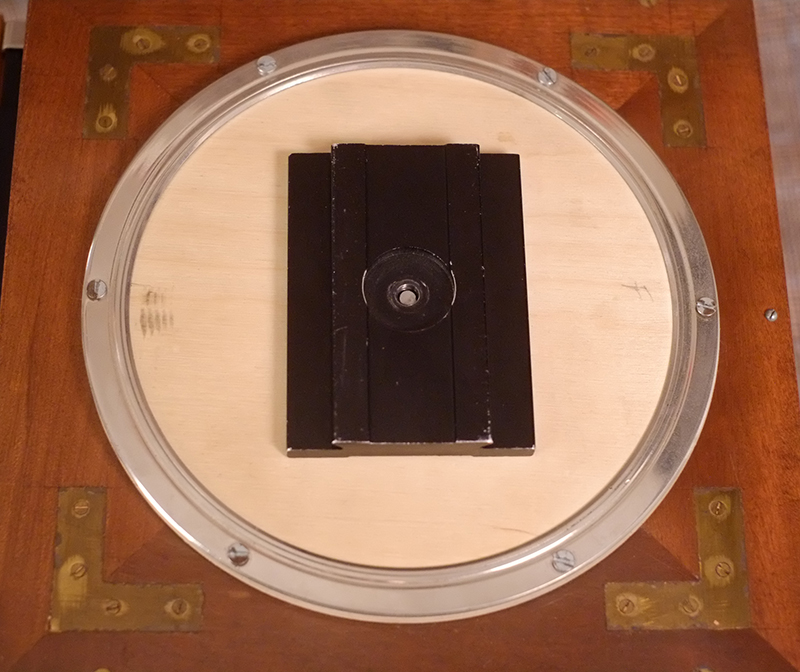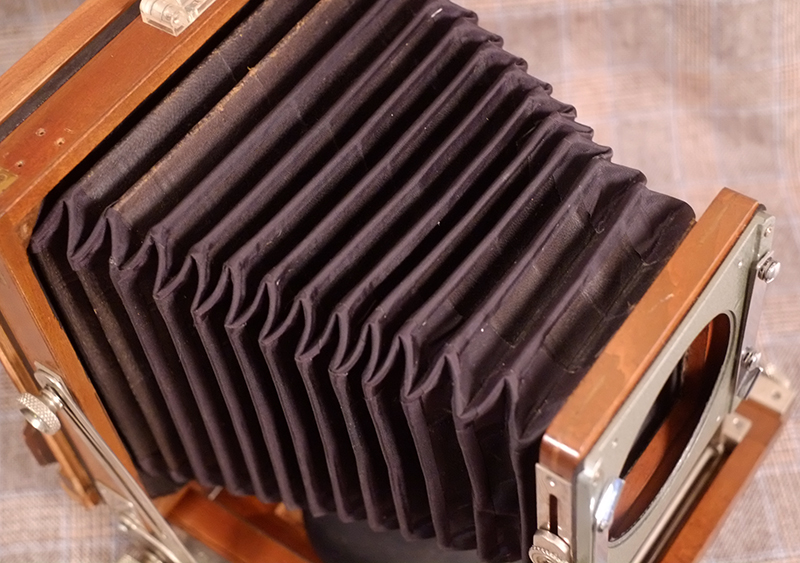
Many are familiar with the later model Tachihara 4×5 wood field cameras coming out in the 1970’s and made until a few years ago. Previous to this Tachihara made cameras under the Tachihara-Hope name. Clearly Tachihara worked closely with Wista and many items can be found under the Hope name that were made to work with the Wista-Rittreck cameras. The Tachihara 8×10 is also identical to the Wista 8×10 so there seem to be many associations between the Japanese camera manufacturers.
The Tachihara-Hope half plate camera is a fairly common find in Japan. The 4 3/4 x 6 1/2 format was very common in Japan and there were many manufacturers of this format camera. Other models from Osaka and many others are very similar to the Tachihara-Hope camera. The Tachihara-Hope can normally be identified by a metal plate on the camera back. Sometimes the plate is missing but most of these type cameras can be converted to modern 5×7 format.
One of the most sought after light weight 5×7 field cameras is the Ideka Anba 5×7. This camera is fairly rare and not easy to find. It is nearly identical to many of the Japanese half plate camera designs. The Tachihara-Hope half plate looks and movements function almost identically to the Ikdea Anba 5×7. For this reason it makes a good candidate for conversion to modern 5×7 format. In finished condition my Tachihara-Hope half plate camera with 5×7 back weighs in at only 4.25 pounds making it one of the lightest 5×7 cameras possible. I have used it extensively through the years as a light weight field camera. This camera is lighter than most 4×5 view cameras. I also paid only a few dollars for the camera since it is half plate format and not in demand.
To complete the conversion I started with a Burke and James 5×7 slider back. This back was made to shoot two frames on one sheet of standard 5×7 film. I removed the sliding 5×7 back from the housing and used it to make the back for the camera. I did this conversion many years ago so I don’t have any pictures of the process but the description should suffice. Since the slider back is much thinner than the half plate camera back I added strips of cherry to the short section of the slider back. I added these dimensionally to fit the width of the half plate camera back. I then added thin wood strips to the inside edge of the back to create the light trap that fits into the camera back. I also had to rebate a 1/16″ slot into the back all the way around the edge so the camera clips can hold the back.

The width of the inner edge inside the half plate back is only 6.25 inches. Since the 5×7 back sits a bit further back there is no vignette with any of the lenses I have used. Generally I use only wide and normal focal length lenses so I have not used this configuration with long lenses but I don’t see any reason it would not work.
At the end of the day I have a very light 5×7 field camera that is capable of easily handling lenses as wide as my Wollensak 108mm Extreme Wide Angle f12.5. I have also mounted a brass 75mm lens and had no issues using the lens on this camera. The Tachihara-Hope is a really great camera for wide angles as the rear of the camera can be tracked forwards for short focal length lenses.
Some other conversions to the camera were the addition of a Wista-Rittreck to Linhof lens board adapter that I simply mounted on the front of the camera so I could use standard Linhof type lens boards. The adapter fits the front of the camera very well and I have had no issues with this set up excepting the adapter board makes the front standard a little thicker. To accommodate the extra thickness I chiseled out some wood from the round camera base to fit the lens board adapter. I also removed the stock metal tripod mounting arms that came on the camera. These were made to work with a specific wood tripod which I did not have. I simply added a round piece of 1/4″ baltic birch plywood with an Arca-Swiss type mounting plate to fit my tripod. Since this camera was so inexpensive and fairly common I felt no harm in modifying permanently for my needs.

As typical of Japanese cameras the bellows are very thin. This camera required extensive bellows patching made with bellows cloth with transfer tape applied to it. I had to tape over most of the bellows creases and all the way down each set of corners. Unfortunately since I had to use so much bellows patch material the thickness impedes the camera from closing all the way. I do find it a little annoying but at the end of the day it still compacts well and is very usable. You don’t need a perfect camera or fancy over priced field camera to make great images! This camera still looks great and the bellows patches are quite hard to notice until you get within inches of it so it still has great visual appeal common to wood field cameras.

I can’t think of a better camera for my landscape type work in the field. At 4.25 pounds is easily the lightest 5×7 that I have and as such I use this camera the most. It has front tilt, front rise/fall, rear tilt and rear swing which is more than adequate for most landscape work I do. It can handle heavy lenses as well and I can barely squeeze my Fujinon SW 125mm f8.0 lens through the front panel. Normally I pair this camera with my super light weight field lens kit which includes Wollensak Ex. Wa. 108mm f12.5, Fujinon 150mm f5.6 and Kodak Ektar 203mm f7.7. For the super low price and light weight this is really a great camera for me. Granted I did a lot of work on it but it was well worth it and as I understand it’s even lighter than the Ikeda Anba 5×7 and a small fraction of the price.
